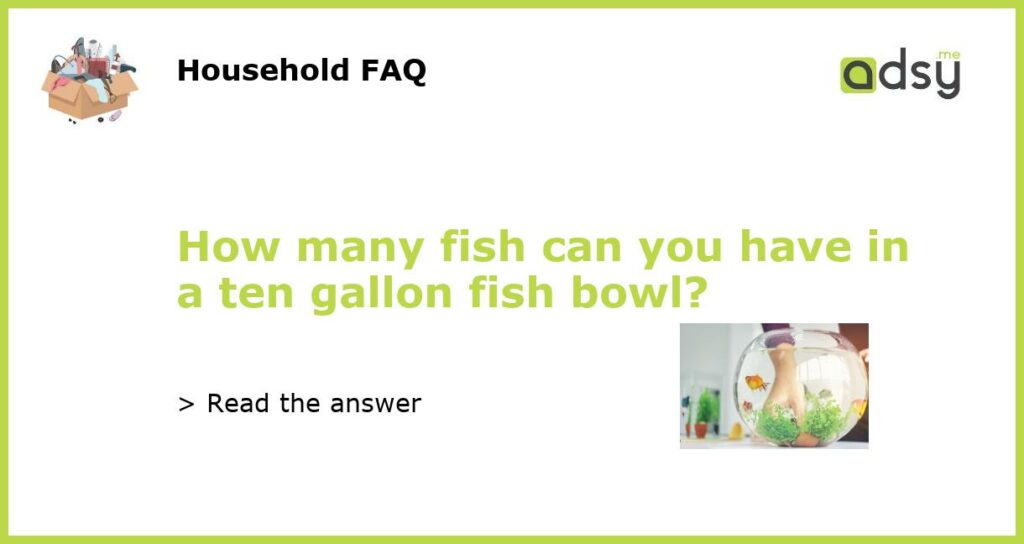Understanding the Basics of Fish Bowl Capacity
Firstly, it’s important to understand that the capacity of a fish bowl is determined by its volume. A ten gallon fish bowl, for instance, holds approximately 37.8 liters of water. However, the actual number of fish that can be safely kept in this bowl depends on various factors such as the size, species, and behavior of the fish, as well as the quality of water, filtration system, and other environmental factors.
The Rule of Thumb: One Inch of Fish per Gallon of Water
One commonly used rule of thumb is to allow one inch of fish per gallon of water. This means that a ten-gallon fish bowl can accommodate up to ten inches of fish, assuming the fish are small and have a low bioload. However, this is not an exact science and is often debated among hobbyists and experts. Some argue that this rule is misleading and can result in overstocking and poor water conditions.
Consider the Fish Species and Size
It’s essential to consider the species and size of the fish when stocking a fish bowl. Different species have different requirements for living space, water quality, and habitat. For example, some species like goldfish tend to produce a lot of waste and require a larger volume of water to thrive. On the other hand, some small species like guppies or tetras can comfortably live in a ten-gallon fish bowl.
Quality of Water and Filtration System
Maintaining good water quality is crucial when keeping fish in a bowl. Fish produce waste and other toxins that can quickly accumulate and harm their health if not removed promptly. Thus, a good filtration system is critical to keep the water clean and clear. A filter should be chosen based on the size of the fish bowl and the bioload of the fish. Regular water changes, testing, and monitoring are also essential to maintain a stable and healthy aquarium environment.
The number of fish that can be kept in a ten-gallon fish bowl varies depending on the species, size, and environmental factors. While the one inch per gallon rule can be used as a general guideline, it should not be relied on solely. Proper research, careful observation, and monitoring are necessary to ensure that the fish are happy and healthy in their environment.






